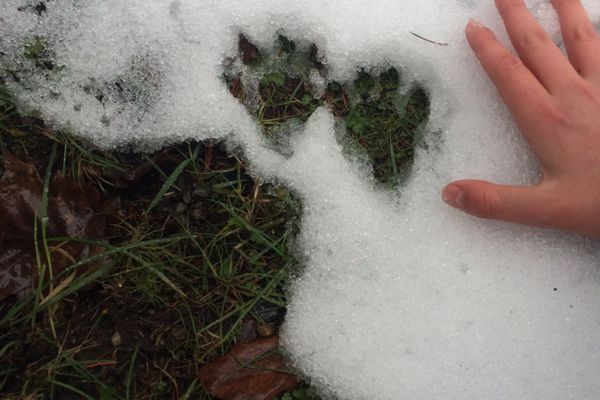Identify a wild animal track
Find a wild animal track outdoors, make careful measurements and sketches, compare features with a field guide to identify which animal left it.


Step-by-step guide to identify a wild animal track
10 Animal Tracks Beginners Can Find and Identify
Step 1
Ask an adult to come with you so you stay safe and get help when you need it.
Step 2
Walk slowly across soft ground like mud or sand and scan the area to find animal tracks.
Step 3
When you spot a print, stop and kneel a short distance away so you can look closely.
Step 4
Gently clear loose dirt or leaves away from around the print with a small stick without touching the main print.
Step 5
Place a small stick or coin right next to the print so you have a size scale.
Step 6
Measure the longest part of the print with your ruler or tape and write that number in your notebook.
Step 7
Measure the widest part of the print with your ruler or tape and write that number in your notebook.
Step 8
Count the number of toe marks in the print and write that number in your notebook.
Step 9
Check the print for claw marks and write down whether claws are present or absent.
Step 10
Draw the print to scale in your notebook using the ruler to keep the shape accurate.
Step 11
Label your drawing with the measurements the number of toes and the claw note.
Step 12
Open your field guide and compare the shape toes claws and measurements to find the best matching animal.
Step 13
Write the animal name you think made the track and how sure you are about your identification.
Step 14
Share your finished track identification drawing notes and what you learned on DIY.org
Final steps
You're almost there! Complete all the steps, bring your creation to life, post it, and conquer the challenge!

Help!?
What can we use instead of a ruler, tape, or a printed field guide if we don't have them on the walk?
If you don't have a ruler or tape, lay a straight piece of string or folded paper next to the print as a scale and later measure it with a household ruler, and if you lack a printed field guide use your smartphone to photograph the print and compare it to online guides.
What should we do if the print is faint, partially smudged, or clearing the area seems to risk damaging it?
If the print is faint or smudged, stop clearing, look for fresher prints nearby, use low-angle light from a phone to reveal impression depth, and place your scale (stick or coin) before taking measurements or a photo to avoid further damage.
How can we adapt this activity for younger children and for older kids who want more challenge?
For preschoolers focus on safe steps like counting toes, noting claws, and taking a photo in the notebook, while older kids can draw the print to scale, record multiple measurements, log GPS coordinates, and research likely species in the field guide.
How can we extend or personalize the activity after identifying a track?
After identification, extend the activity by making a plaster cast of the print, adding the drawing and measurements to a dated track journal, mapping multiple finds, and sharing the detailed entry and photos on DIY.org.
Watch videos on how to identify a wild animal track
Identifying Animal Tracks
Facts about wildlife tracking for kids
🧭 A good field guide with photos and measurement charts makes identifying tracks much easier than guessing from memory.
🐾 Many wildlife tracks reveal the animal group—feline prints tend to be round with no visible claw marks, while canine prints are more oval and often show claws.
📏 Measuring a track's length and width plus the stride (distance between steps) helps estimate the animal's size and whether it was walking, trotting, or running.
🔍 Track patterns (gaits) give clues—deer often leave two-toed hoof prints in a near-straight line, while rabbits leave a distinctive 'Y' shaped hop pattern.
🕒 Tracks can vanish quickly: light rain or wind can erase fresh prints in minutes, but prints in compact mud or snow can last for days or weeks.
How do I identify a wild animal track step by step?
What materials do I need to identify a wild animal track outdoors?
What ages is tracking wild animal prints suitable for?
What are the benefits and safety tips for finding and identifying animal tracks?


One subscription, many ways to play and learn.
Only $6.99 after trial. No credit card required



